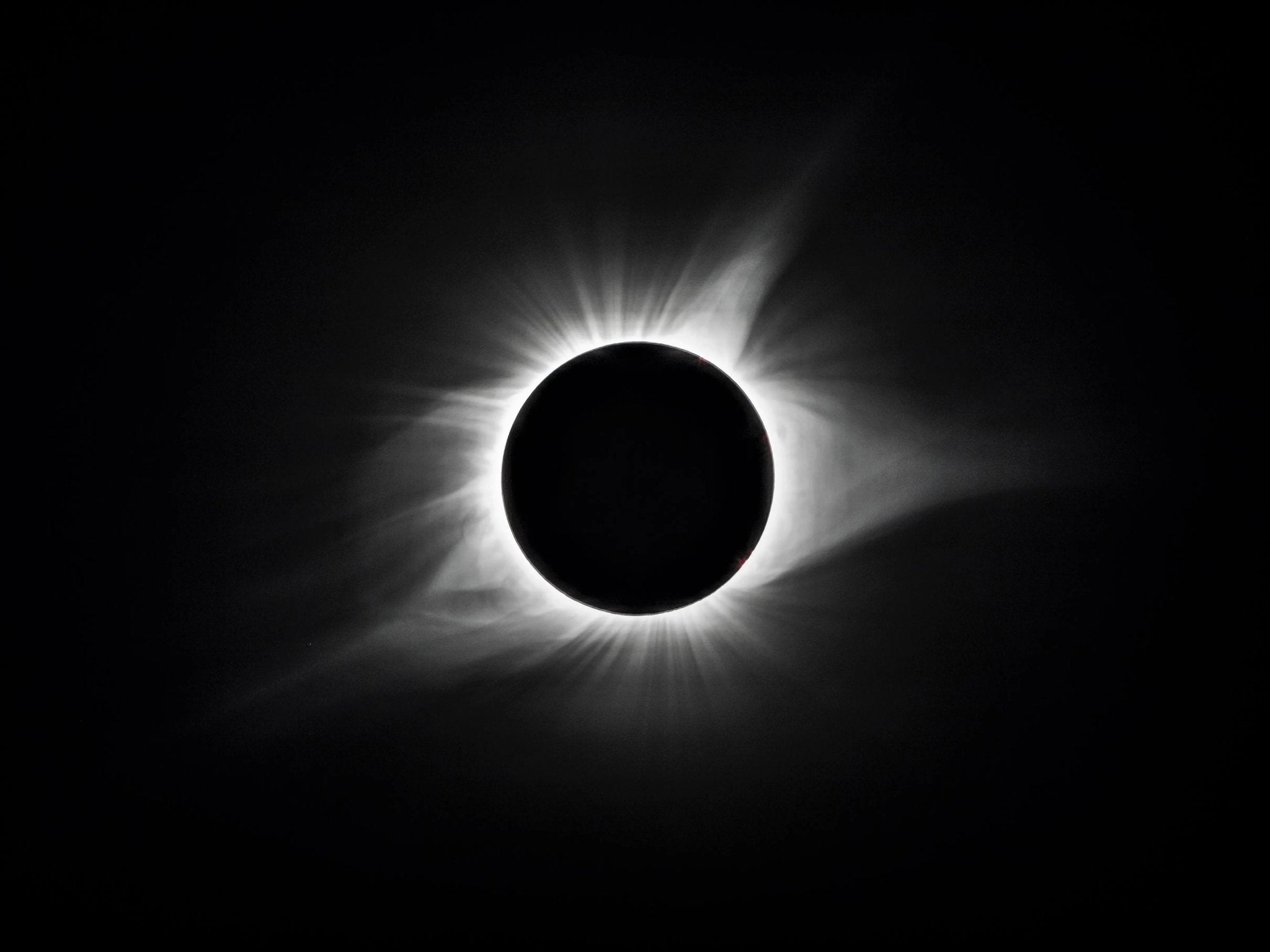In the grand theater of the cosmos, few phenomena capture our imagination quite like a solar eclipse. The collision of celestial bodies, the play of light and shadow, and the awe-inspiring transformation of day into night have mesmerized humanity for centuries. In this comprehensive overview, we will embark on a journey through the realm of solar eclipses, delving into their nature, types, mechanics, historical significance, cultural interpretations, and scientific observations. From ancient mythologies to cutting-edge astronomical research, let us unravel the mysteries of these cosmic spectacles that bridge the gap between the terrestrial and the celestial.
Defining the Solar Eclipse: Celestial Dance of Light and Shadow
At its core, a solar eclipse is a breathtaking celestial event that occurs when the Moon passes between the Earth and the Sun, temporarily obscuring the Sun's light. This intricate alignment results in the casting of the Moon's shadow on Earth's surface, leading to a remarkable darkening of the skies. As the shadow races across the landscape, the heavens unveil a mesmerizing tapestry of light and darkness, evoking a sense of wonder and reverence.
Types of Solar Eclipses: A Kaleidoscope of Celestial Configurations
Solar eclipses manifest in various forms, each presenting unique visual and experiential qualities:
- **Total Solar Eclipse**: The pinnacle of solar eclipses, a total solar eclipse occurs when the Moon perfectly aligns with the Sun, fully obscuring the solar disk. This phenomenon immerses observers in an eerie twilight as the Sun's corona, a shimmering aura of plasma, becomes visible.
- **Partial Solar Eclipse**: In a partial solar eclipse, only a portion of the Sun is hidden by the Moon's shadow. This creates a captivating crescent shape that seemingly takes a bite out of the solar disk.
- **Annular Solar Eclipse**: An annular eclipse occurs when the Moon's apparent size is smaller than the Sun's, resulting in a "ring of fire" effect. The Sun's bright rim encircles the darkened center of the Moon.
- **Hybrid Solar Eclipse**: This rare occurrence is a blend of total and annular eclipses. The type of eclipse observed depends on the observer's location, making it a dynamic phenomenon.
The Mechanics of Solar Eclipses: Aligning the Celestial Dance
The mechanics behind solar eclipses are rooted in the geometry of the Earth-Moon-Sun system. The Moon's elliptical orbit leads to varying distances from Earth, influencing its apparent size. When the Moon is positioned at the right distance, a solar eclipse occurs. This exquisite alignment, known as syzygy, demands precision in time and space for the celestial bodies to align and cast their fleeting shadow.
Frequency and Occurrence: The Rarity of Celestial Alignment
While the cosmic ballet is eternal, the stage for a solar eclipse is set less frequently. On average, Earth experiences between two to five solar eclipses each year, with some years showcasing none at all. This rarity enhances the sense of occasion, making each solar eclipse an eagerly anticipated event for skywatchers, astronomers, and enthusiasts worldwide.
Historical Significance and Cultural Interpretations: Eclipses Through Time
Throughout human history, solar eclipses have inspired awe, wonder, and even fear. Across cultures and civilizations, these celestial events have been interpreted in various ways:
- **Ancient Civilizations**: Ancient societies often viewed eclipses as cosmic battles, omens of calamity, or interactions between celestial deities. In cultures such as the Greeks, Chinese, and Mayans, eclipses held immense cultural and mythological significance.
- **Historical Milestones**: Eclipses have marked pivotal moments in history. The ancient Greek philosopher Thales of Miletus is said to have predicted a solar eclipse in 585 BCE, influencing the outcome of a battle. This event underscores the profound impact of celestial phenomena on human affairs.
**Scientific Observations and Insights: Windows to Astronomical Understanding**
While eclipses have captivated human imagination, they also serve as valuable opportunities for scientific exploration:
- **Corona Research**: Total solar eclipses offer a rare chance to study the Sun's corona, a region of extreme heat and magnetism. Observations of the corona provide insights into solar activity and phenomena like solar flares.
- **Gravity Tests**: Eclipses provide opportunities to study gravitational effects. The bending of starlight during an eclipse, known as gravitational lensing, confirmed Einstein's theory of general relativity.
**Modern-Day Observations and Technological Advancements: Chasing Shadows**
In the modern era, advancements in technology have allowed for precise predictions and detailed observations of solar eclipses:
- **Eclipse Chasers**: Enthusiasts, known as "eclipse chasers," travel the globe to witness multiple solar eclipses. They plan their itineraries based on eclipse predictions, demonstrating the lengths people go to experience these cosmic events.
- **Solar Observatories**: Advanced instruments such as telescopes, cameras, and spectrometers provide unparalleled insights into the Sun's behavior during an eclipse, contributing to our understanding of solar dynamics.
Fun Facts and Natural Phenomena: Illuminating Eclipse Curiosities
Beyond their scientific significance, solar eclipses offer a trove of intriguing and awe-inspiring phenomena:
- **Speed of Shadow**: The Moon's shadow races across Earth's surface at speeds of up to 2,000 miles per hour (3,200 kilometers per hour), creating a fleeting moment of darkness.
- **Baily's Beads**: Just before and after totality, sunlight filtering through lunar valleys creates a "beads on a string" effect, enchanting observers with an ethereal display.
- **Diamond Ring Effect**: As totality ends, the last rays of sunlight create a dazzling diamond ring-like effect, eliciting gasps of amazement from onlookers.
Conclusion: Bridging the Celestial and Terrestrial Realms
Solar eclipses remain one of the most wondrous and captivating cosmic events, transcending cultures, time, and scientific understanding. As we gaze skyward to witness the intricate dance of the Sun, Earth, and Moon, we find ourselves connected to the cosmos in a profound way. Whether pondering ancient myths, exploring cutting-edge research, or simply marveling at the cosmic ballet, solar eclipses remind us of the boundless beauty and mystery that lie beyond our earthly realm.



Share:
How Eclipse Glasses Have Affected Astronomy Education
Lesson Plan: Eclipse Observation Log